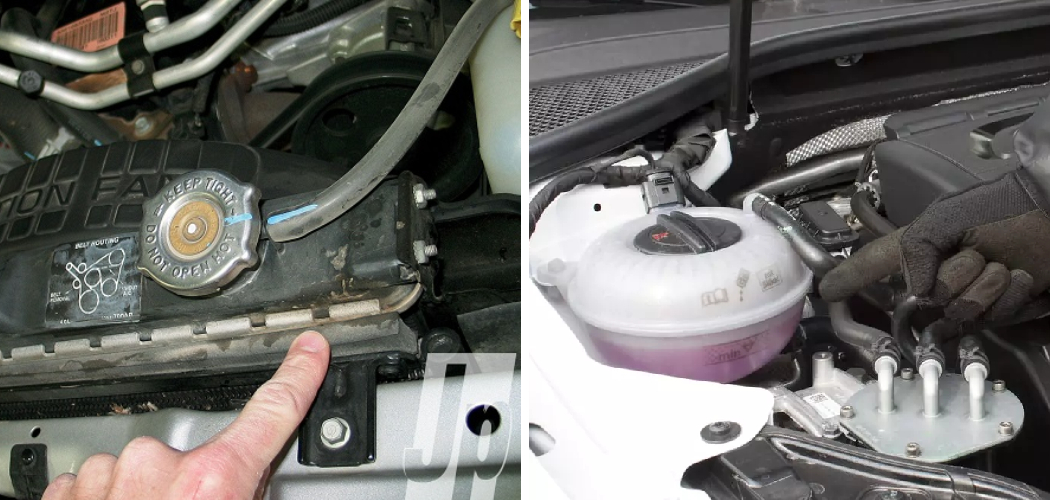As the colder months approach, ensuring your home is ready for the winter chill is essential. One critical component of a functioning heating system is the radiator. It works tirelessly to keep us warm and cozy during those long winter nights. However, what if you noticed something out of the ordinary?
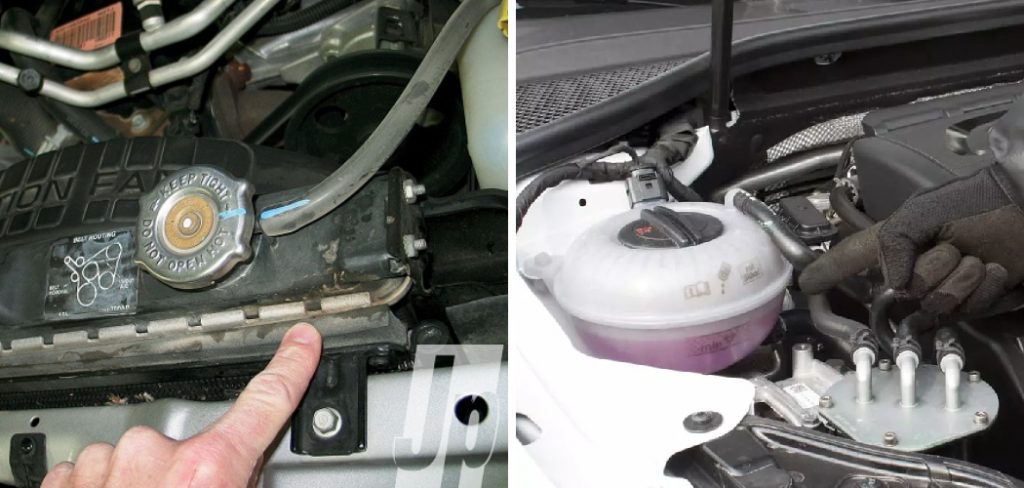
Is a puddle forming near your radiator or an unexplained decrease in heat output? These may be signs of a leaking radiator and could lead to more significant issues if not addressed promptly.
In this blog post, we’ll dive into the common causes and warning signs of radiator leaks and how to tell if your radiator is leaking; as well as solutions you can implement to fix them. So grab your favorite hot beverage, and let’s get started on keeping our radiators leak-free this season!
Necessary Items
Before diagnosing and fixing a leaking radiator, it’s important to gather some essential items that will be useful during the process. These include:
- A towel or rag to soak up any excess water
- A bucket or container to catch any dripping water
- A flashlight to provide better visibility if necessary
- Protective gloves to keep your hands dry and safe
- A radiator key (if applicable) to bleed air out of the system
- Radiator sealant or epoxy putty for temporary fixes
10 Steps on How to Tell if Your Radiator is Leaking
Step 1: Check for Puddles or Wet Spots
The most obvious sign of a leaking radiator is water around its base. Inspect the surrounding area for any puddles or wet spots, which can indicate a leak in the system. If you have carpeted floors, check for any dampness or discoloration.
Step 2: Look for Corrosion or Rust
Radiator leaks can also be caused by corrosion or rust on the unit itself. Carefully examine your radiator for any deterioration, such as discoloration, flaking paint, or holes. This is especially important if you have an older radiator or live in an area with high humidity.

Step 3: Check the Pressure Gauge
If your radiator has a pressure gauge, it can be a helpful tool in determining whether there is a leak. If pressure drops consistently, it may indicate a leak somewhere in the system. However, normal heat expansion and contraction can also cause pressure fluctuations.
Step 4: Bleed the Radiator
Sometimes, air trapped in the system can mimic the symptoms of a leaking radiator. To rule out this possibility, use a radiator key to bleed any excess air out of your system. This can help improve heat output and decrease the chances of false alarm leaks.
Step 5: Monitor the Water Level
If your radiator has a sight glass or gauge that measures the water level, check it regularly. A sudden decrease in water levels can indicate a leak in the system. However, keep in mind that normal evaporation can also cause fluctuations.
Step 6: Check for Loose Connections
Loose or faulty connections between the radiator and pipes can also lead to leaks. Gently wiggle these connections to see any movement or water seepage. If so, tighten or replace the links as needed.
Step 7: Inspect the Valves
The valves on your radiator control the flow of hot water into the unit. If they are worn or damaged, they can lead to leaks. Inspect the valves for any signs of wear or corrosion and replace them if necessary.
Step 8: Look for Cracks or Damage
Unfortunately, a cracked radiator is not easily fixable and may need to be replaced entirely. Carefully inspect your unit for any cracks, holes, or other damage causing a leak. If you find any, it’s best to seek professional assistance.
Step 9: Use Radiator Sealant or Epoxy Putty
If the leak is small and easily accessible, use radiator sealant or epoxy putty as a temporary fix. Apply the product according to the instructions on the packaging and monitor for any changes in the leak. Remember that this is a short-term solution and may only buy you some time until a professional can properly repair the leak.
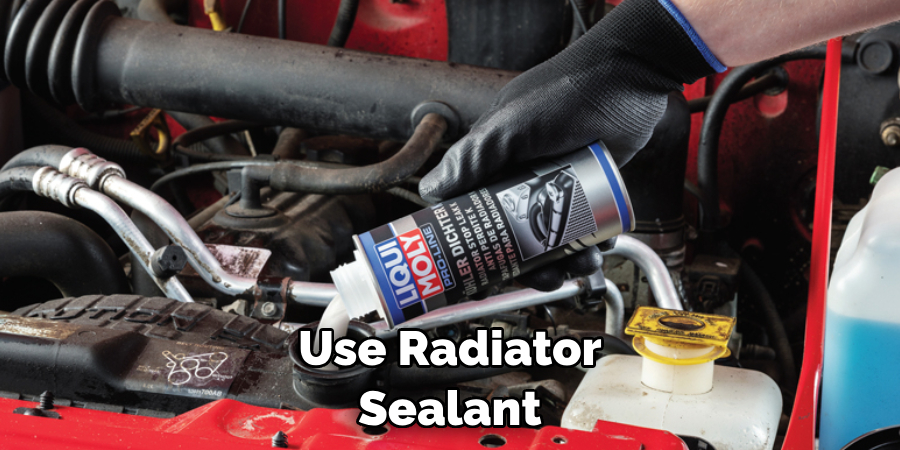
Step 10: Call a Professional
If all else fails or you need clarification on any of the steps mentioned, it’s always best to call a professional plumber or HVAC technician to assess and fix the issue. They have the necessary knowledge and tools to diagnose and repair radiator leaks properly, ensuring your home stays warm and leak-free this winter.
A leaking radiator can lead to more significant issues if not addressed promptly, so watching for any warning signs is essential. Regular maintenance and inspections can also help prevent leaks from occurring in the first place.
With these tips on how to tell if your radiator is leaking, you can stay warm and cozy all winter long without any surprises. Stay safe and stay warm, friends! So, these were the necessary steps to diagnose a leaking radiator. Take proper precautions while handling a potentially hazardous issue like this.
8 Things to Avoid
Now that we know how to tell if our radiators are leaking let’s also discuss some things we should avoid when dealing with this issue. These include:
1. Ignoring Warning Signs and Delaying Repairs
As with any household issue, paying attention to warning signs and delaying repairs is essential. A leaking radiator can quickly escalate into a bigger problem that can cause damage to your home and potentially harm your health.
2. Using Household Items as Temporary Fixes
We understand the urgency of stopping a leak as soon as possible, but using items like duct tape or towels to fix a radiator temporarily is not recommended. These fixes are not reliable and can make the issue worse.
3. Over-tightening Connections
While it’s essential to check for loose connections, be careful not to over-tighten them, as it can cause damage or breakage in the system. Use the appropriate tools and follow manufacturer instructions.
4. Using Chemical Sealants in Metal Radiators
Chemical sealants may be effective for plastic or composite radiators but can cause more harm than good when used with metal radiators. The chemicals can erode and corrode the metal, leading to more leaks.
5. Neglecting Regular Maintenance
Like any other appliance or system in your home, radiators also require regular maintenance to keep them functioning correctly. Neglecting maintenance can lead to more significant issues and increased chances of leaks.
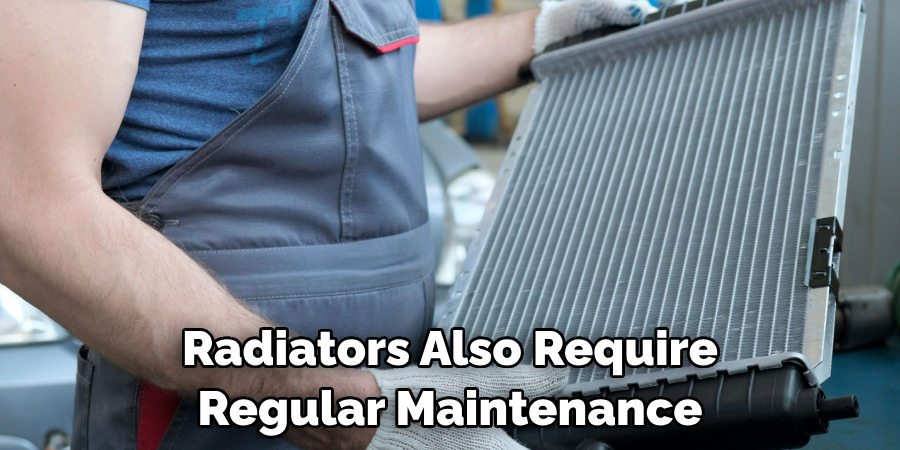
6. Attempting DIY Repairs Without Proper Knowledge and Tools
While there are some temporary fixes that you can try yourself, it’s essential to leave the repairs to professionals with the knowledge and tools to fix a leaking radiator properly.
7. Not Shutting Off Water Supply Before Repairs
Before attempting any repairs, shutting off the water supply to your radiator is essential. This will prevent any potential accidents or further damage from occurring.
8. Ignoring Safety Precautions
Lastly, always prioritize your safety when dealing with a potentially hazardous issue like a leaking radiator. Wear appropriate protective gear and take necessary precautions to prevent accidents or injuries.
By avoiding these things and following the steps mentioned earlier, you can effectively diagnose and address a leaking radiator in your home. Remember to schedule regular maintenance checks to ensure your radiators are in good working condition.
Frequently Asked Questions
Can I Use a Radiator Sealant to Fix a Leaking Radiator Permanently?
Radiator sealants are only temporary fixes and may not fully address the issue. It’s best to seek professional assistance for a permanent solution.
How Do I Check for Leaks in Inaccessible Radiators?
You can use a small mirror or camera to inspect hidden or hard-to-reach areas of your radiator. It’s best to call a professional for repairs if you find any leaks.
Is It Safe to Use My Radiator if It Has a Small Leak?
No, it’s unsafe to use a leaking radiator as it can potentially worsen the leak and cause damage to your home. It’s best to shut off the water supply and call for repairs.
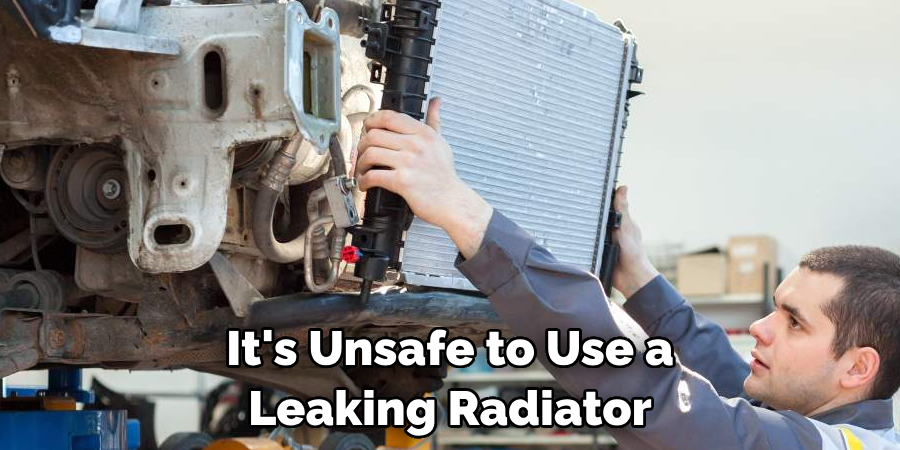
Can I Prevent Radiator Leaks?
Regular maintenance and inspections can help prevent radiator leaks from occurring. However, some issues may still arise due to wear and tear. In such cases, addressing the issue promptly is essential to prevent further damage.
No matter what, always prioritize your safety and seek professional help when dealing with a leaking radiator. Stay warm and stay safe, everyone! Keep these tips in mind for a hassle-free winter season.
Conclusion
A leaking radiator is a common issue that can cause inconvenience and potential damage to your home. However, with these steps on how to tell if your radiator is leaking, you can effectively diagnose and address the issue promptly. Being aware of the signs that your radiator is leaking is crucial for ensuring the safety and efficiency of your vehicle. Not only can a leaking radiator lead to costly repairs, but it can also put you at risk for breakdowns and potential accidents.
By regularly checking your coolant levels, paying attention to any strange noises or smells, and noticing any changes in temperature or performance, you can catch a leak early on and prevent further damage. Always consult a professional mechanic if you suspect a leak or have concerns about your vehicle’s radiator.
And don’t forget, regular maintenance such as flushing and replacing old coolant can also help prevent leaks from occurring in the first place. So stay vigilant and proactive regarding your car’s health because no one wants to be stranded on the side of the road with a faulty radiator.

